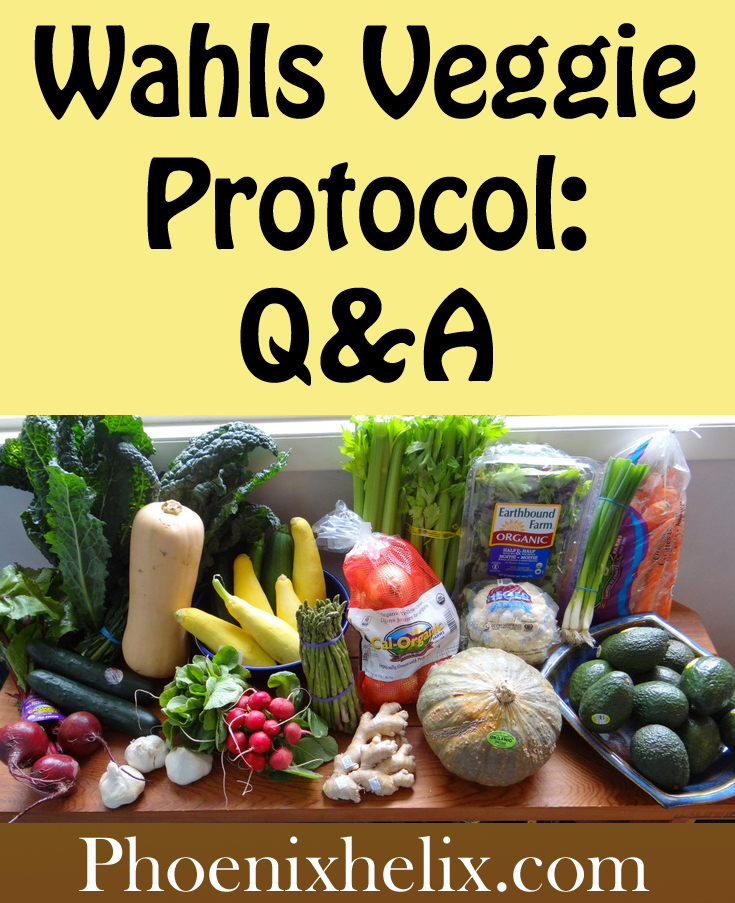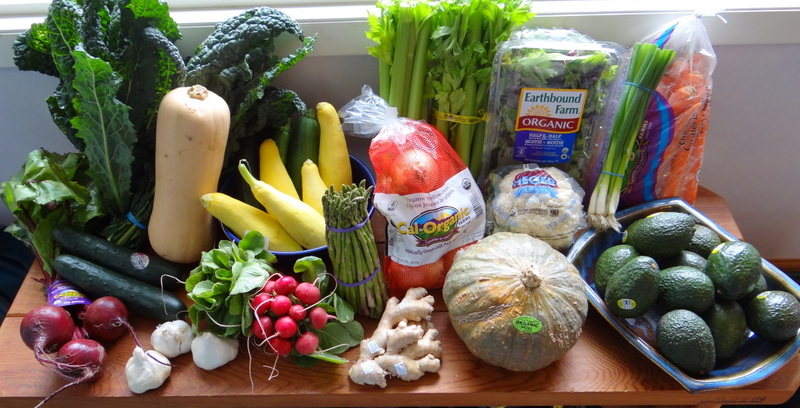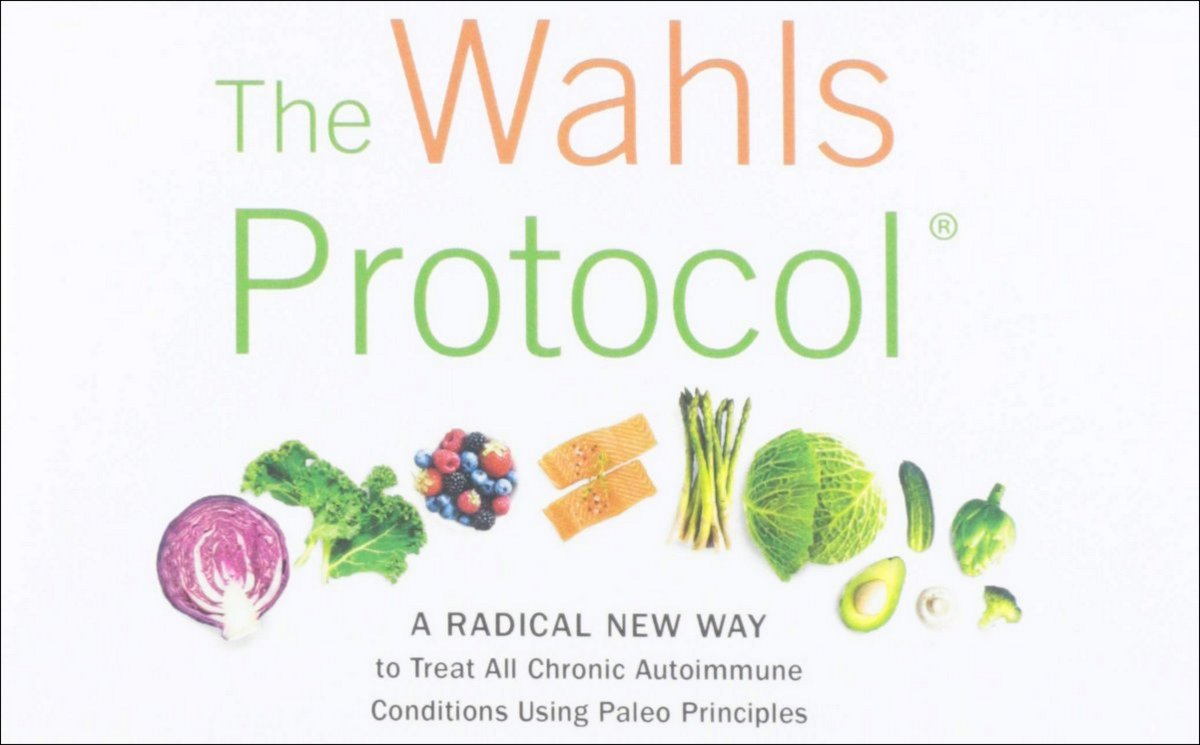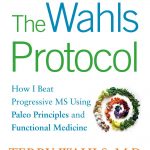“It occurred to me, that I should get my long list of nutrients from food [rather than supplements]. That if I did that, I would probably get hundreds and maybe thousands of other compounds that science had yet to name, that would be helpful to my brain and my mitochondria.”
~ Dr. Terry Wahls
Who is Dr. Terry Wahls?
If you aren’t familiar with Dr. Terry Wahls, check out our interview. She’s a leader in the paleo movement, having reversed her multiple sclerosis through dietary intervention. A cornerstone of her protocol is feeding the mitochondria in our bodies, with 9 cups of vegetables/fruit daily.
P.S. If you have people in your life who think paleo is a meat-only diet, feel free to direct them to this article, or any article about Dr. Wahls. Paleo people LOVE their vegetables and often eat more of them than vegans/vegetarians who get a bulk of their calories from grains.
What are mitochondria?
Mitochondria are the cell’s power producers. They convert food molecules into the energy our cells need to do their jobs. They also coordinate communication between cells, and every function in our body depends on them. Every cell contains mitochondria, and some cells contain thousands of them. You can see why Dr. Wahls focused on feeding the mitochondria, to give our bodies optimal health.
Tell me more about the 9 cups of vegetables and fruit daily.
Through years of personal study, Dr. Wahls identified 31 microntutrients that the mitochondria need to function. She then learned what foods provide those nutrients and came up with her “9 Cups Daily” protocol:
- 3 cups (about one heaping plateful) of leafy green vegetables, such as kale, collards, chard, spinach or lettuce, which provide vitamins A, B, C and K.
- 3 cups of sulfur-rich vegetables, such as cabbage, broccoli, cauliflower, onions, garlic, mushrooms and asparagus, because they support the removal of toxins from the body.
- 3 cups of colorful vegetables and fruits (ideally three different colors each day), because they’re full of antioxidants. They have to be colored all the way through, so apples and bananas don’t count as colored, but berries, peaches, citrus, beets and carrots do.
Can you eat less than 9 cups, and still gain benefit?
Any fresh vegetables you add to your diet will provide vital micronutrients. Dr. Wahls believes that 9 cups daily is the “sweet spot” for men and tall women, for optimal health. She said petite women can get by on 6 cups daily. If you can’t manage the full amount right now, start with what you can, with a goal of increasing over time. Also, remember these measurements are raw. So, if you can’t imagine eating a salad that includes 3 cups of greens, go ahead and cook your greens. They’ll reduce in size by at least half, and for some people, cooked greens are easier to digest anyway. Lastly, there is one vegetable that has a special status: garlic! Because garlic is so potently healthy, Dr. Wahls says that 2 garlic cloves is the equivalent of 1 cup of sulfur-rich vegetables.
How should the vegetables be prepared?
She prefers the vegetables be either raw, or cooked at a low temperature, for maximum nutrient retention. If you boil or steam your vegetables, she says you should drink the water, so as not to lose any micronutrients that have leached into the water. Soup is a lovely way to eat vegetables, because you automatically drink the liquid in which the vegetables are cooked. A quick sauté is another option. That said, Dr. Wahls loves kale chips and the occasional roasted vegetable, so you can cook them that way, too, but the nutrient density is greatest in her recommended methods.
What if it’s hard for me to chew raw vegetables? One symptom of some autoimmune conditions is chewing fatigue.
In this case, she recommends juicing the vegetables in a high-powered blender. She doesn’t recommend an extraction juicer, because she wants us to get the whole foods, including the fiber. That said, some autoimmune conditions include digestive symptoms that are irritated by fiber; in that case feel free to use an extraction juicer. Like every protocol, you need to personalize it for you. Another option for anyone with a fiber sensitivity is to heal it through the GAPS Introduction diet. Many people find they can eat fiber again after 1-4 weeks on that protocol.
Do they need to be organic?
Ideally, organic is best, but we all have budgets. Buy whatever is within your means. If you buy conventional produce, rinse them with some white vinegar and water before cooking, to remove any pesticide residue. If you have the option to buy some (but not all) of your produce organic, the Environmental Working Group has a shopping list called the Clean Fifteen and Dirty Dozen, outlining which crops have the highest and lowest pesticide use.
What’s the rule on starchy vegetables?
I asked her about this, and she said starch tolerance varies from individual to individual. She herself does best with a lower starch diet. However, she knows both individuals and traditional cultures who have done well with high amounts of starch. She includes beets and carrots in her colored vegetable category, because they’re on the lower end of starch content and the higher end of micronutrient content. Also, the other 6 cups of vegetables (in the leafy green and sulfur categories) are automatically non-starchy and provide a good balance.
How important is variety?
Dr. Wahls recommends rotating vegetables as much as possible, simply because they each contain a unique micronutrient profile. The more variety you eat, the richer your nutrition.
Do I eat the vegetables plain or with other foods?
Always eat them with some healthy fat for better nutrient absorption. Healthy fats include avocados, unrefined coconut oil, ghee, extra virgin olive-oil and animal fats such as tallow and lard. Also don’t neglect your protein needs. The Wahls Protocol is a version of the paleo diet, which means no grains/legumes/processed foods, and she recommends some grass-fed meat or wild fish at each meal, as well as bone broth and fermented foods daily. And once/week, she recommends organ meat (for its nutrient density) and seaweed (for iodine and selenium).
What are some examples of how to eat this many vegetables on a daily basis?
- Looking for recipes? Check out this A-Z Vegetable Recipe Roundup and the Wahls Protocol Cooking for Life.
- Juice or blend 3 cups of vegetables daily. Drink this alongside a meal, to keep blood sugar stable.
- Make a huge pot of vegetable soup in bone broth for the week, and have a portion every day.
- Roast large trays of veggies and eat them throughout the week.
- Have a large salad for lunch.
- At dinner, get used to a 4-6 oz. portion of quality fish or meat, with a huge side of vegetables cooked in a healthy fat.
- Snack on berries, with coconut flakes or coconut milk.
- Finally, batch chopping vegetables is a great time-saving technique.
The above answers I have gleaned from Dr. Wahls’ writings, presentations, and our interview earlier this year. Check out her website for more information.
Wahls Protocol Series
For more information on the Wahls Protocol, check out my series of articles and interviews.











Hi Eileen, my wife has MS and so does her mother. We have 2 young daughters aged 3 and 7. If they have a genetic predisposition to MS, should we avoid giving them gluten or dairy? We are aware Dr Wahls advises people that actually have MS to avoid these food groups such as my wife but wanted to find out for our children. If so do you have any links or articles/studies that you could direct me to? Thanks!
Hi Joe. I don’t know of any research noting that connection in children. However, you may want to consider testing your children for gluten sensitivity. That could help guide your choices. You’re a good Dad to be looking out for your whole family. Wishing you all abundant health!
Hi! If you’re still checking this article – I’ve seen in places where it says you need 3 cups of raw greens or 6 cups of cooked greens. I’m confused to which one it is? Thanks!
Hi Jenna. You measure raw, not cooked, because some greens cook down more than others. Dr. Wahls recommends a blend of raw and cooked vegetables in your diet. You can mix it up, varying it day to day. You don’t have to achieve perfect measurements every day. This is an overall goal. I hope that helps.
Please don’t say “it’s not that hard.” Prrhapse not for you, but for most people there is, and there is no shame in that. I’ve been eating more or less this way for six years, and while I’m very accustomed to it, it is still hard at times. AND it’s extremely worth it.
You are absolutely right. I actually wrote this article 7 years ago, and I didn’t remember writing that. I removed that sentence and I apologize. I agree with you that it’s absolutely worth the effort, but that doesn’t mean it doesn’t require effort. After 7 years, I know that very well!
Eileen, thanks for the great article. It bugs me that I intend to eat a bunch of spinach and kale using wahls guidelines, but they are so high on the dirty dozen(!) Will a vinegar/water rinse do the trick ?
Hi Justine. I’ve been told that 1 part vinegar to 3 parts warm water is an effective veggie wash. Another option is a 10% saltwater solution. You can do a quick scrub & rinse, or soak them up to 20 minutes. (The longer soaks remove more but actually quite a bit gets washed away immediately).
Hi,
I am a pretty OCD person and I am having trouble with the amount of leafy green I need to consume. it’d be awesome If I could have a number in terms of grams that equals the amount of raw leafy greens total I should consume in a day (then with this amount I would be free to consume them raw or cooked, but am looking for grams raw)
Thanks!
Hi Clayton. I understand that you would love that information, but to my knowledge it doesn’t exist. Dr. Wahls never got that specific in her recommendations. Her goal is to help people increase the nutrient-density of their diet and their vegetable intake overall. She doesn’t want people to get too obsessive about the details. Remember that she gives a big range (6-9 cups of vegetables per day), so it’s not an exact science. There is a Wahls Protocol Group on Facebook. You could post your question there as well and see how other people do their measurements: https://www.facebook.com/groups/wahlsprotocol/
I have MS, 2ndary progressive diagnosed 13 years ago. I just started the Wahl’s Protocol diet. Is dark chocolate permitted, like HU Chocolate? https://hukitchen.com/collections/chocolate/products/earl-grey-cashew-butter?gclid=CjwKCAjw_YPnBRBREiwAIP6TJ6tR42G3aCAJCeKLKReVI50Oc-DcYZPCrbBC4w_2jQiVtvdbjGsathoCRA0QAvD_BwE, How about raw olives?
Hi Steve. Dr. Wahls recommends limiting sugar on the protocol in general. So, occasional dark chocolate would be fine, but I don’t think she’d recommend it daily. HU kitchen is a good paleo-friendly brand for those special occasion treats. And all fruits and vegetables are allowed on the protocol, including olives. Since you’re just starting, I recommend joining the Wahls Protocol Group on Facebook. They can answer all of your questions going forward. And if you haven’t yet bought her book, I highly recommend it: http://amzn.to/2j74p31 . Wishing you wellness in every way!
Hi Eileen, I’m curious if there’s a powder you’d recommend of Dr Cowens that would help with getting vegetables in for following the Walhs Protocol? I’m thinking I would add one to my smoothies. Also- Dr Wahls mentioned using a blender for “juicing” fruits and veggies, I’d like to try that because I don’t have a juicer. Do you think you’d put raw veggies like carrots and berries and leafy greens with a liquid or should I cook them first? This was a helpful post, thank you!
Hi Amy. Dr. Wahls recommends eating a wide variety of vegetables from the three categories: Brightly colored, sulfur-rich, and leafy greens. The more diversity in your choices, the greater your nutrition. So, there’s not one particular vegetable to choose from Dr. Cowan. There are lots of great options! You might choose one that you don’t buy fresh, for added variety. I love the leek green powder and add that to soups and other cooked meals. For a smoothie, the three-beet powder or one of the green blends might work best. But really, there’s no bad choice there. As for your last question, most people use raw fruits and veggies in smoothies, as a nice contrast nutritionally to their cooked meals. The only reason to cook them first for a smoothie would be if you have digestive issues. Don’t overthink this too much, though. The goal is to increase your veggie intake on a daily basis, in whatever way tastes best for you and is easiest for you to sustain over time. Feel free to experiment to find what works for you.
Hi Alisha. Dr. Wahls does allow a little wiggle in her plan, to help make it sustainable for people. She asks that people stay 90% strict paleo, but allows the occasional gluten-free grain the other 10% of the time. With that in mind, you could occasionally have sprouted organic corn. Here’s a summary of her protocol, and you can find all the details in her book. Wishing you wellness in every way!
Can you eat sprouted corn on Wahls Paleo? Not all the time, but as a once and a while? I am an Arizonan and I grew up on tacos. Keto allows for cheese “tortillas” (totally not the same), but Wahl’s anything takes cheeses out. “Sprouted” is championed, so is sprouted organic corn an okay option every once and a while?
Hi Jennifer. A scale measures weight rather than cups, so any conversions it does wouldn’t be accurate. Trust the cups instead, but for greens, it should be a “packed” cup, rather than just a few leaves thrown in loosely. Does that make sense? Another way to look at the recommendation overall, is that 3/4 of your plate each day should be vegetables, with as much variety as possible.
Hello! Im having a hard time understanding the whole “cups” thing. If I use a scale, 2 cups of leafy greens equals 4 large platefuls of spinach! But If I use a regular measuring cup, 2 cups seems like nothing. Which should I use? Thanks guys! 🙂
how much is a cup in grams for this diet ?
Hi John. A cup is actually a volume of measurement rather than a weight, since vegetables have a wide variety of densities. There is no direct conversion, but the closest method would be for you to reference a liquid measuring vessel. A cup is equal to approximately 236 ml.
Can you tell me why legumes, beans are excluded? My understanding is that their protein content and fiber is highly beneficial…?
Hi. In spite of how they are advertised, legumes aren’t really a dense protein source (most contain two to three times as much carbohydrate as protein), and they’re nowhere near as dense (or complete) as the protein found in meat or seafood. As for fiber, vegetables contain fiber with the added benefit of significantly more nutrition. Finally, legumes also contain anti-nutrients and enzyme inhibitors which make them hard to digest, which can both cause and contribute to leaky gut. That’s why they aren’t recommended on the protocol.
I have reacurring MS. I have been on the wahls paleo protocol for 7 weeks now. I’m not on any drugs, my hope is to feel better, get rid of my symptoms and reduce the leisons with this life change. Although my goal is not to lose weight, I do wonder why I lost 8 lbs the first 2 weeks, but nothing since. I’m very strict and have not cheated. I’m not sure if I’m dong something wrong.
Hi CJ, there are too many variables for me to be able to answer that question. Since weight loss isn’t your goal, I wouldn’t worry. Focus on MS symptoms instead, and look for improvements in how you feel. Wishing you wellness in every way!
I have secondary progressive MS. I don’t have much of an appetite. I have a hard time eating that much food in a day. Any suggestions?
Thanks
Wendy
Hi Wendy. Dr. Wahls recommends smoothies in that case. Always drink them alongside a small meal that includes protein, to optimize digestion and moderate the blood sugar response. She has lots of smoothie recipes in her cookbook: The Wahls Protocol Cooking for Life. Also, Dr. Cowan’s Vegetable Powders can help boost your vegetable intake as well. They’re very concentrated and can be sprinkled on any meal.
Hi there, I’m eating this way for just all over health. Prevention is a huge thing in this world. I was wondering about the 9 cups of veg. I eat broccoli, cauliflower, red cabbage and green cabbage, spinach, spaghetti squash. I put everything in a processor with exception of the spaghetti squash. What would be the equivalent of 9 cups since I’m processing it to the size of rice.
Magie, i would measure before you process it, but this doesn’t have to be an exact science. The fact that you are increasing your veggie intake for prevention is already wonderful! Work on diversity, too – the more variety of vegetables, the deeper the nutrition.
I was recently diagnosed with MS and am trying to follow Wahl’s protocol as my budget allows. Do you know how I can more accurately measure 1 cup of leafy greens? Do I pack a measuring cup for solids? Also, I cannot always afford grass-fed beef. Sometimes I get Applegate’s roast beef slices which read “grass-fed.” I worry that this may be considered as a processed food. Any thoughts? My worries are the same for canned wild salmon. Any guidance is greatly appreciated. It has been difficult to find help in these matters. Thank you for starting this blog.
Hi Catherine. Dr. Wahls would tell you to do your best and not over-stress about perfection. It’s not necessary to pack the cup when it comes to the greens – loosely packed is fine. As for Applegate, I think that’s fine once in a while but I wouldn’t make it a major part of your diet. Packaged meats just aren’t as healthy as fresh. However, canned wild salmon is absolutely fine. Some tips for buying quality food on a budget are to shop the sales, get to know your local farmers, buy in bulk if you have a freezer, and learn to cook the less expensive cuts of meat as well. Are you familiar with the Clean Fifteen and Dirty Dozen? – they help you prioritize which fruits and veggies you can buy conventional vs. which are better to buy organic (and you can save these for special occasions if you can’t afford organic varieties regularly). If you have Terry’s cookbook, her recipes use parts of vegetables people often throw away, eliminating food waste and saving money at the same time. With practice, you’ll find ways to become more and more efficient with your food dollars. Wishing you wellness in every way.
Thank you!
If you have not watched Terry Wahls Ted Talk, I recommend you do so ASAP. https://www.youtube.com/watch?v=Fs7jqqdv5eg She is very clear that pharmaceuticals did not help her- in fact, they hurt her.
I recently had an abdominal MRI that showed nothing, and doctors want to do a million other scans to see what’s wrong. Once I started reading about MS, I noticed I have all the symptoms. But I refuse to go the modern medicine route – I can’t imagine paying $2,000 or $5,000 a month for medicine that will make me worse.
Isn’t it much better to pay an extra $200/month for groceries that will really heal my body from the inside out. Thank God for Terry Wahls!
Hi Cheryl. If you browse my website you’ll see I actually have a Wahls Protocol Series, which includes personal interviews with Terry. Her TED Talk is very inspirational! You can certainly start the Wahls Protocol without a diagnosis, but I recommend you pursue further testing anyway. Many things can mimic the symptoms of MS, and knowledge is power. Medication (and medical treatment in general) is a complex issue, and it’s very individual. Food is powerful medicine and a beneficial part of everyone’s protocol, whether it’s combined with medication or not. It’s not always an either/or case, and Terry will tell you that herself. In fact, she still takes some pharmaceuticals herself for pain.
Thanks Eileen!
You have no idea how much it took for me to have the 1st MRI with gadolinium. From what I’ve read about them, they are very dangerous to do back-to-back. I just wish doctors could make a diagnosis without contrast materials and am definitely nervous about getting another contrast MRI.
Hi Eileen,
Thank you for your thoughtful responses to these comments from other people. The links and resources and further clarification are helpful.
Holly, you made my day! Wishing you wellness in every way.
I noticed that with the recipes for wahls smoothies she adds nutritional yeast. Can you explain the benefits of it. Will it make the smoothie taste like cheese? and is there some nutritional yeast that isn’t good for you? Thank you
Hi Belinda. Nutritional yeast tends to be a love/hate thing. You either like the flavor or you don’t. (I personally don’t.) I think Dr. Wahls recommends it for the B vitamins it contains. If you want to try it in your smoothies, be sure to buy a non-fortified brand. (Some brands add artificial vitamins to the mix that can be hard for the body to process.) Sari Foods is a good brand.
To make a long story short…I am a mess! I am fairly certain (and so are some doctors) that i have an autoimmune disorder and I have blood numbers that are all off the charts bad, on top of that I got kidney cancer 9 months ago and had half of my kidney removed…anyway its time I stopped B.S’ing and really worked to fix myself. I am go go go and really struggle to settle down physically/mentally on top of eating gluten free oats, vegan protein powder, and some dairy pretty much every day.
Anyway, I have just started the Autoimmune Diet Protocol recommended Dr. Wahls…just a few questions about this….
1. I am eating 14 cups of veggies a day, as well as 1 banana, 1 sweet potato (bracketed around my workout), and 1/2 cup of blueberries. … my daily macros are 2300 cals, 140g protein, 100g fat, 220g carbs …. my question is would there be any recommended limits on any specific macros or total cals on this?
My days look like this…
Banana…(then workout, 1:20-2hours per day Oly Lifting)
Meal:
1 Sweet Potato
5oz Turkey
4 Cups Veggies
1tbs Extra Virgin Olive Oil
Meal:
4 Cups Veggies
1 Avocado
1tbs Apple Cider Vinegar
1 Cup Bone Broth (or Sauerkraut)
Snack:
Epic Bison Bar (or Veggies/Fats)
Kombucha
Meal:
6 Cups Veggies
5oz Bison/Beef/Salmon
1tbs Coconut Oil
Snack:
1/2 Cup Coconut Cream
1/2 Cup Blueberries
Any tips/thoughts on how this looks? … i am 6 foot and weigh 174lbs
In addition to that any tips/advice on anything nutrition, exercise, bloodwork, tests, etc.
Hi Mark. While I don’t do 1:1 consulting, I recommend Amy Kubal She’s a registered dietitian and well versed in both the AIP and the Wahls Protocol.
If I start on level 3 and after 3-6 months switch to level 2 by adding some foods back to my diet one at a time will I gain back all the weight I lost ?
Victoria, if I understand you correctly, you are currently doing the ketogenic level of the Wahls Protocol (Wahls Paleo Plus) and lost weight and are worried about regaining it once you add some starches back into your diet? When it comes to weight loss and gain, it’s very individual and involves many factors, with diet only being one of them. Some people feel a lot healthier with starches; others feel healthier without. There is no one-size-fits-all answer.
Thanks so much for this fantastic summary. I was dx 04/15 and was in denial for the first 9 months (but I did know meds weren’t for me due to PML risk). After 2 relapses over the last 3 months, I saw a neurologist at UCSF – he showed me my MRIs side by side, a year apart. The difference was startling & I’m kicking myself for not jumping in th Wahls sooner. For the past 7 weeks, I’m 100% committed (forever) to this diet and working w/ my functional med MD. Currently I have no visible symptoms, thankfully, so my question is – how can I gauge what is working for me, food-wise?? Do I just wait until I need another MRI or experience another relapse?? That’s a bigger fear for me – that I can’t ‘see’ if what I’m doing is helping.
Side note: that neuro extended an offer of a clinical trial that looks promising (RHIgM22 if you want to check it out) but is only in the 2nd round of Phase I – any thoughts on participating?? I recently read your post about taking meds & it made me think whether or not I want to be in this potentially beneficial trial…
thanks!! 🙂
Hi Jess. Welcome to the healing diet community! When you don’t have active autoimmune symptoms, it can be more difficult to see improvements. I would say look for improvements in how you feel overall. Do you have more energy? Are you sleeping better? Are your moods more balanced? Do you have less pain (if that applies to you) – even if it’s just headaches or muscle tension? Is your digestion better? Most people with or without autoimmune disease have these types of symptoms that keep them from feeling their best, and the diet works there first, and then delves deeper on the autoimmune issues that developed long before we were diagnosed. On the medication issue, I’m not qualified to advise you. Personally, I’m leery of clinical trials because they are literally untested medicine, meaning you are the test subject. But you and your doctor are the only ones who can make that decision.
Thank you so much for your insight Eileen, I do have about 1000 more questions for my MD haha. The drug had good safety reports in the FIH round and it isn’t an immunosuppressant which is great…it stimulates the oligodendrocytes to produce and repair myelin, theoretically repairing existing damage. I look to drugs only if they treat the root cause, not just the symptoms but like you, I am leery of trials.
I think my immediate next step is to start incorporating regular physical activity to continue my improvement. I recently accepted a position for a New Grad RN Residency in the Periop Dept at Lucile Packard (Stanford’s Children’s Hospital) and I’m so so so excited…but then doubt creeps in as to if I’ll really be able to maintain remission through the stress this will bring. And when do I tell them, if I tell them, about my dx? Anyway, I do like a good challenge so I look forward to what all this will bring & I will continue to look to your website for support 🙂
Congratulations on the new job, Jess. If you haven’t listened already, check out my Stress Management podcast. It’s full of tips to stay peaceful through stressful transitions.
Thank you very much Eileen for summarizing the points of the Wahls diet so clearly. Although I read the book, too many details confused me but now I understand it well thanks to this post. Best regards.
You’re welcome, Chris. That’s my goal – to make information simple and clear. Wishing you wellness in every way.
Hi. Just curious. I was dx with ms in February of this year and have been following wahls level 2 since February. I have no food sensitivities so just curious. When do I reintroduce foods back in? I will always remain gluten free by what about dairy? I would like to introduce dairy back into my diet. Lol I miss cheese. Not milk. And also. Sometimes if we can’t afford the free range chicken. Is there anything we can do to help clean normal chicken off or does it absolutely have to be no cage free range. Thank you
Hi Jen. Terry Wahls doesn’t recommend people reintroduce dairy. However, many people on the paleo autoimmune protocol give it a try. You’ll want to start with ghee, because that’s the least allergenic food, and if that goes well, you can try other forms of dairy. Here’s an article that covers the steps of the reintroduction process. And here’s a detailed guide.
Someone above mentioned getting off eggs?? I ordered Dr Wahls book and am waiting for it to arrive. Looking for some solutions for my husband and we current eat eggs quite a bit.
Hi Kate. Since eggs are a common food allergy and Terry is intolerant to them herself, she recommends people remove them from their diet for 3 months and then reintroduce to test for tolerance. During the elimination period, this egg-free breakfast e-cookbook might be helpful: 85 Amazing AIP Breakfasts.
Thank you Eileen thats what i thought. So i guess a normal tea cup that is 200-250ml will do. Also any advice here for having too much gas since i started?many thanks
You might need some digestive support if this is a new way of eating for you. Here’s an article with some tips: http://autoimmune-paleo.com/5-digestion-mistakes-you-may-be-making/
Could someone tell me what size would be a cup in the Wahls diet please thank you x
The vegetables are measured raw, Orsi. Since vegetables vary in weight, I can’t give you an ounce/gram conversion. A measuring cup is really an estimate of portion size. In volume, 4 cups is close to a liter.
This is a wonderful post on the Wahls protocol. I’ve been doing AIP for over a year with good results, but am looking for more improvement. I’ve ordered her book, but am ready to start ASAP. From what I gather, it’s pretty similar to what I’ve been doing, except I limit my fruits to 1 serving of blueberries per day on Wahls instead of the 3-4 fruits I’m currently eating, and my daily yam has to be limited to2 per week. The veggies don’t seem to be an issue. I count 1 cup raw or half cup cooked. I’m trying not to complicate it like I do everything else….so your reassurance that it’s really not that hard, is what I needed to hear. I have Hashimotos and Adrenal issues, so I’m curious if this will have any positive effects. Fingers crossed.
Hi Gina. Yes, the Wahls Protocol is all about nutrient-density, so those changes should be helpful. Also consider adding organ meats, if you haven’t already.
Wondering if anyone if lyme disease has done this protocol and helped them heal?
Thanks!
Hi Stephanie. While paleo isn’t a cure for lyme, it helps many people improve their symptoms and regain strength, as they pursue other treatments that might be necessary to fully heal. Here’s one such story: http://www.primalpalate.com/paleo-blog/success-story-treating-chronic-lyme-disease-with-paleo/ . Dr. Wahls protocol focuses on nutrient-density, which is the key to our bodies being able to function as well as possible. She definitely recommends it for Lyme disease.
I don’t understand why white veggies aren’t included. There are plenty of white veggies that are full of nutrients, like cauliflower, turnips (I get baby white spring turnips at the farmer’s market that are amazing) I also love the japanese sweet potatoes that are white fleshed with dark maroon skin.
White veggies are included, Vian. They’re just not in the “brightly colored” category. In fact, cauliflower is listed in the sulfur-rich veggies category. The important thing is to eat as wide a variety of vegetables as possible, for the deepest and most diverse nutrition. Terry talks about the 3 categories to help people branch out and not get all of their vegetables from just one category. To give you a different example, here’s an A-Z Veggie Recipe Roundup.
I’m confused… can one eat and blend from any of the 3 groups or must the groups remain separate?
They’re only separated into categories to encourage people to eat from all 3 groups. You can certainly eat them together, which both Terry & I do.
I just bought her book. Waiting for it in the mail. I’m doing the diet which is. Gluten free dairy free soy free. Organic everything. Lol. If this can help me not take meds. I’ll try whatever I can. And you’re right about the nuts and berries. I just requested to join that group on Facebook. Thank u so much for you’re time
Hi Eileen. I have a few questions. I was diagnosed with ms about a week ago. I never have been a healthy person. I’m by far healthy and since my dx. I am trying to follow this diet but I am so confused. I have no problems with the veggies but what about drinking? I know we can drink almond milk unsweetened but what about flavored waters or juices or anything besides plain water? And I seen I can eat gluten free waffles but when I was trying to look I seen one organic and another one gluten free. Lol. I’m not smart when it comes to shopping right and other things I can eat. Some Ppl say gluten free organic chips are ok. I got some grass fed meats already but I’m just so confused on the snack things. Can we eat certain crackers or anything like that. Nuts? Thank u very much for any feedback
Hi Jennifer. Your choices will depend on what level protocol you choose. Her book offers 3 diet options: (1) The Wahls Diet, which is basically gluten-free + the veggie protocol. It sounds like that’s the one you’re trying, and it is a good place to start. (1) Wahls Paleo which is 100% grain and legume free and focuses on nutrient density. People see more success at this level, but it’s fine to take your time and work your way up to it. (3) Wahls Paleo Plus which is the ketogenic version of her diet and what Terry now follows herself. My advice to you is to buy her book, read it cover to cover, and continue to keep it nearby as a reference. Don’t look for replacement packaged snacks. Instead, make the transition to eating whole foods. If you eat 9 cups of veggies daily, plus plenty of protein and fat, you won’t be as hungry for snacks. If you are, Terry does recommend nuts and berries. Lasly, I recommend you join the Wahls Protocol Facebook Group. There are 4500 members who can answer your questions, and also give you inspiration and support. Best wishes for healing, Jennifer!
Does the protocol recommend rotating the vegetables to avoid a food intolerance? I’ve been eating very close to a Paleo diet the past 3 years but have ended up with several food intolerances which cause joint pain. Just curious how this would work with the suggested menu for the 9 cups of veggies above?
Hi Georgene. Most people don’t need to do food rotation, but if that is part of your healing protocol, you can definitely apply it here. Dr. Wahls recommends eating a wide variety of vegetables for the greatest nutrition. Her book, The Wahls Protocol, includes complete food lists, making rotation choices easy.
Hi Eileen. I had someone send me the link to your website today, and I’m very excited! But a little overwhelmed also. I am 43, and have had RA for 17 years. I am on NSAIDS, Methotrexate and am getting ready to start Humira, after failing Enbrel. I’m also on a low dose prednisone for one month only to help me through this Flare, and until my Humira is approved. My question is, where do I start? Should I start with Paleo, then workup to the AIP? Any help will be appreciated!
Hi Tracie. Yes, start with paleo and then work up to the AIP if needed. Some people are lucky and see great results with regular paleo. In addition to the Wahls Protocol, here are a couple of other books to get you started: Real Life Paleo and Practical Paleo.
Hey, I just wanted to mention something that might make some changes easier for some people. When I considered changing my diet, I realized that so many vegetables a day would be easier to consider from a different standpoint; I have my starchy vegies, my lower starch vegetables, squash and fiber-dense vegetables, and leafy vegetables with vegetables like broccoli and Greanbeans. If considering starchy vegetables as a sub for grain foods… I have to say, peas and carrots, or even creamed spinach, has a lot more flavor than noodles. And for those irreplaceable dishes (spaghetti, Mac and cheese, etc.), a firm squash or vegetable with a nutty flavor run through a contraption to cut it into noodle shapes (stiring shape, thin crinkle fry shaper, curly fry cutter), should do well.
Good luck! 😉
Good point, Vesta. Removing grains from the diet leaves a lot more room on the plate and in our stomachs for all these wonderful vegetables.
I forgot to mention; spices, in variety and abundance, added to your vegetables, along with a nice fat, can make them unbelievably delectable. So much more satisfying than an entire plateful of, say… spaghetti. A lot of flavor really adds to satiety, and these foods sit more comfortably on your tummy than more aggravating, less healthy foods. If done well, it can taste a lot better, and also feel better on your tummy, besides the health benefits.
The point I was making is, from psychological stand point, its so much easier to consider them as flavorful alternatives or substitutions, rather than a pesky requirement to meet (or avoid, in the case of bread, etc.) . That, and they can taste so much better.
Many joys, and all the best to everyone.
My son and I use Magic Bullet to juice all the required greens and fruit every day, raw. I have rheumatoid arthritis and most likely my son too. After starting with this, we are feeling so much better, just started about two weeks ago, and looking forward to the future again.
I’m so glad you’re seeing results already. Here’s to the power of food!
Is it possible to make a daily smoothie of some of the veggies? I think I can get some of the 9 cups in, but maybe putting 1/3 of the veggies (3 cups) in a smoothie might work. What do you think?
Absolutely, Jen. Dr. Wahls actually does that herself.
Dear Eileen,
I discovered your site a couple of days ago and I’m really impressed by how detailed and enlightening all your articles are!!!
I’m an MS sufferer for almost 15 yrs and started Wahls Protocol about 1 1/2 month ago. Although I’ve read “minding my mitohondria” and ordered The Wahls protocol (didn’t receive it yet), I’m trying to get information through the net and now I realise I’m not doing evrything right…
I try to eat 9 cups of veggies and fruit (as I live in Greece I eat mostly Greek greens like chicory, chard and in-season fruit; unfortunately most sulfur-rich veggies are off-season and can’t find them) but in my fruit salad I add 15 soaked almonds everyday. I also make paleo bread with flax seed, eggs (whites and yolks) and as I have a sweet tooth too I often make cupcakes, pancakes and other desserts using almond or coconut flour,eggs and stevia 🙁
Now that I’ve read your posts about AIP I feel I’m on the wrong path…
Finally I usually cook my meals with our own extra-virgin olive oil (read though that olive oil should not be heated)
Do you think that all these ‘mistakes’ are to blame for not seeing any physical improvement so far?
I’m so puzzled! I’d appreciate your advice!!!!
You’re not necessarily on the wrong path. Many people improve on a regular paleo diet, without the need to take it further with the AIP, and while 1 1/2 months feels like a long time, it’s a very small amount of time compared to the 15 years you have had MS. It might take longer before you see improvement. Give it 3 months doing what you’re doing now, and just focusing on maximizing your nutrient density. It’s OK to have a treat once in a while, but you don’t want them to be a major part of your diet. So, I recommend cutting back on those and seeing if there’s any way you can broaden your vegetable intake locally. If after 3 months, you still aren’t making much progress, you have two options to consider: (1) The AIP or (2) Wahls Paleo Plus (which is the top level of her dietary protocol). As for EVOO, while it’s most nutritious in its raw state, if it’s high quality, it’s safe for cooking. However, one of Terry Wahls’ favorite cooking fats is unrefined coconut oil – extremely beneficial to the brain. See if you can find some of that to add to your diet as well.
Sophia you may be like me in that you have to follow Terry’s more intensive levels. Also you haven’t cut out eggs? Might be essential for you to do so.
Chana
I thought that kelp was high in arsenic? Does Dr. Wahls address this in her book?
I don’t have the answer to that, William. That might be a good question to email Terry through her website: http://terrywahls.com/
I understand Dr. Wahls reccomends seaweed as part of her diet. What type of seaweed? Can you get the seaweed found in the grocery store used for sushi or does it need to be raw?
Hi Stefanie. Terry herself uses powdered kelp and dulse flakes from this company: https://www.seaveg.com/shop/
I stumbled across a comment about this website in a discussion on nutrition and it sounded reasoned and non-fanatic.
My question would be …
I understand there is a lot of difference in the quality of fruits and veggies, their ripeness, the richness of the soil that veggies are grown in – if we are doing this or something like it, how do we know what we are getting?
Just do the best you can. Absolutely ideal would be to grow your own organically in rich soil. After that, it’s best to buy fresh from your local farmers market. After that frozen veggies from the grocery store are often frozen shortly after picking, preserving much of their nutrition. The Clean Fifteen and Dirty Dozen is a helpful guide to the best choices among conventional produce, if you can’t afford organic. No matter what, don’t let perfection paralyze you. Scientific studies showing the benefits of eating fresh fruits and vegetables have been done on conventional produce from a normal grocery store. Anything you eat is going to provide you with something beneficial. The positive choices you make beyond that, provide you even more. Just do the best you can within your locale and budget.
Does Dr Wahls give an amount of protein that should be eaten at breakfast and lunch?
Her recommendations vary from 6-21 oz. of meat daily, depending on gender, body size, and which level of her protocol you’re doing. (Her book has 3 levels of her diet, and the veggies protocol is part of all of them.) I eat about 9 ounces daily, myself. To answer your breakfast/lunch question, she recommends some protein at every meal, but doesn’t specify an exact amount.
hiii my name is mayur and my wife was diagnosed with ms 3 yrs back i just want to know that we are vegetarians can wahls protocol still help patience on vegitables
Hi Mayur. The Wahls Protocol has 3 levels of the diet, and people can choose which level they’d like to do. She gives vegetarian options for level one, but there are no vegetarian options for the other levels. The book describes her reasoning behind this in detail.
You’re right — he was never diagnosed with MS, but I’m sure having MS-like symptoms were no fun either. It’s my understanding that diet played a part in his recovery as well, but I could be wrong on that.
As for cooking oxalate foods…that doesn’t always work:
http://oxvox.com/cooking-food-does-not-lower-oxalate-levels/
Thanks for your reply! 🙂
That’s a good link for anyone with oxalate issues, Kelly. Thanks for sharing.
You’re very diplomatic Eileen. Having MS like symptoms and actually having MS are completely different. Simply put, Curable vs. Not. A round of a simple antibiotics vs. Possibly a lifetime of pain, mental anguish, stress, hospitalizations, confusion, narcotics, opioids, I could easily go on and on! I have MS and I’m just starting the diet and lifestyle change. The flexibility in Dr. Wahls Protocol is wonderful. Since she actually has MS she understands that each of us are completely different in our illness and what works for her will probably need some tailoring for me. As for diet assisting in his recovery, a good diet assists in any recovery from any ailment and/or maintaining health. There can be no argument there.
PS I love how people say, “I hate to be a [downer] here” but then go right to it! Note: you have a choice! Either step away from the post button altogether or at least check your facts first.
There AREN’T many other ways to fix your mitrochandria. I had a functional medicine doc put me on a protocol to do just that and it made me a lot worse, when you are already sick…you have fewer options. I looked at both Paul’s book and Terry’s and Terry’s will be MUCH easier for me to follow. Just wish I could find some meal plans w/o having to join her groups, already paid for the book so it doesn’t seem reasonable to also have to pay to get some meal plans.
Her book has meal plans at the end, so that can get you started. And if you’re on Facebook, there’s a free group where people are sharing ideas: https://www.facebook.com/groups/1432936326924524/ . Once you get the hang of it for a month or two, it becomes easier. Also, all of my recipes are Wahls-appropriate. The main thing with her diet is making sure you eat enough veggies. It might help to measure at first, and then after a while, you’ll be able to tell just by looking at the portion size.
Hate to be the Debbie-Downer here, but there are much easier ways to improve mitochondrial function. Plus, Ms. Wahl fails to mention the HIGH oxalate content of her juicing.
I would instead highly recommend Paul Jaminet’s website. He also recovered completely from MS, but doesn’t need (nor recommend) eating tons of oxalate-ridden raw veggies.
Hi Kelly. Thanks for mentioning Dr. Jaminet. He was recently on a radio show with Dr. Wahls, where they discussed their different views on autoimmunity, and I enjoyed listening to both of them. There’s room in the community for both their voices. One correction though – Paul never had MS. He had an infection that caused MS-like symptoms, and as soon as he went on antibiotics, those symptoms disappeared. Totally different situation. Dr. Wahls actually has MS, and did a Jaminet-style paleo diet for years, but it wasn’t until she added her veggie protocol that she started to improve. So, different people respond to different programs. There’s not a one-size fits-all approach. As for the oxalates, people who are sensitive can do the Wahls protocol with cooked veggies instead of raw. It’s definitely open to adaptation. Blessings.
I watched her You Tube video and was inspired by what I saw. Started to try and incorporate greens into my diet (baby steps) and found that 1 cup of spinach in a morning smoothy had me on the road to adding greens to my daily diet. I’m not up to 9 cups by any means but I choose my meals more consciously now, adding greens and a variety of coloured veggies much more than before.
Baby steps are perfect!
I have SPMS and came across this promising diet which I have started but I want to try it all raw . Will that provide enough vit B12, vit
D and calcium?
Thanks
SA
Hi Sonya. That’s too specific a question for me to be able to answer. Everyone’s vitamin needs are different based on their current health and vitamin levels. I can tell you that although the Wahls diet recommends eating some vegetables raw, it isn’t a 100% raw diet.
Hi I read her book. Dr Wahl belives in eating meat. She was a vegetarian herself before and she believed it could have contributed to her health problems
Great tips! We *try* to eat a ton of veggies and slip them in wherever we can, scrambled eggs with veggies in the morning, green juice and salads in the afternoon, and big stir fries for dinner, but I still don’t think we hit 9 cups a day!
Thanks so much for sharing this on Waste Not Want Not Wednesday, I’ve pinned it.
Wow, I can imagine 9 cups would vastly improve one’s overall health! I’m starting where I can. 🙂
Thanks for sharing at A Humble Bumble!
Really interesting interview. I am sharing this on FB.
Thanks, Jennifer!